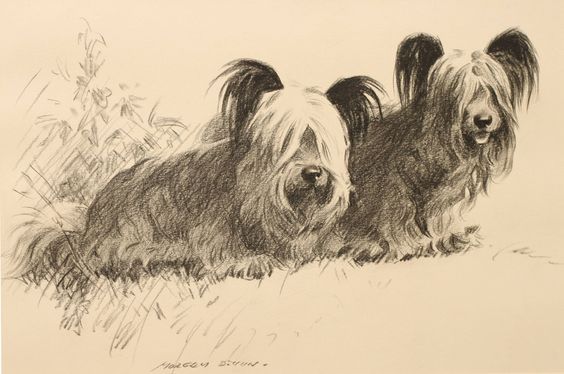
Among the things that some writers get wrong when opining that breeders have ruined breeds from what they once were (and use 100 year old photographs to bolster their point) is an inattention to consistency. Dogs of today may resemble their ancestors, but those ancestors could appear quite different from dogs of their own breed. Since predictability is an important attribute of purebred dogs, it is unfortunate that some writers ignore or overlook this point.
Charles H Mason was a Yorkshire man who with his Mastiff emigrated to the United States in the 1880s. He was the editor of “Man’s Best Friend: An Illustrated Semi-Monthly Journal of Dogs & the Sport they Afford,” but it was his book, “Our Prize Dogs” published in 1888 that affords us a look at dogs of yore, and in particular, Skye Terriers.
He mentioned a dog named “J. H. Naylor’s Drollie whelped in 1885 who weighed 18 pounds. Another bitch named, “Countess” tipped the scales at 32 pounds, almost twice the weight of the other dog. “Highland Belle” whelped in 1881 weighed just under 13 pounds, and a dog named, “Towser 9152” weighed 27 pounds. By 1922, the American standard suggested that dogs should be from 16 – 20 pounds, and bitches between 14 to 18 pounds. These specifications were fashionable until 1956 when a new standard was approved that removed weight specifications. While it is true that the current AKC breed standard doesn’t mention weight at all, as of 2017, the AKC breed weight chart gave range of 35-45 pounds for Skye Terriers and breeders have done a commendable job of breeding dogs within that range as opposed to the near extremes of 100 years ago.
Image: Pencil and charcoal drawing of a pair Skye Terriers/Clydesdales by Morgan Dennis (1892-1960), possibly a preparatory study for a an etching for which the artist was known.
